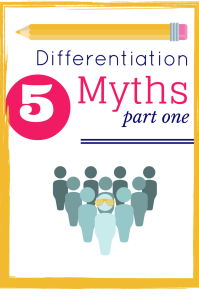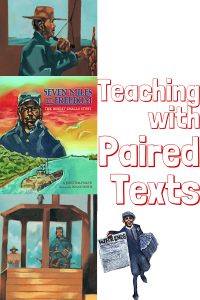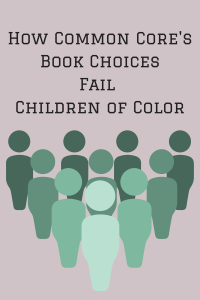April is National Poetry Month. With so many forms of poetry to explore and share with students, what will you choose? Continue reading
Tag Archives: CCSS
Where to Find Culturally Diverse Literature to Pair with Your Required Curriculum
We hear over and over again from teachers across the country how they want to infuse more culturally responsive and relevant texts into their district or school-mandated curriculum.
It’s challenging to do, but what if we had some resources to share to help you out? Continue reading
Celebrate Music in Our Schools Month with Drum-Inspired Books
March is Music in Our Schools Month. In support of music programs, music educators, and wiggling students trying to sneak a beat, we are celebrating (global) Music in Our Schools Month with DRUMS!
Continue reading
Why Literacy Teachers Should Care About Math
I’ll be the first to admit it: I didn’t pay much attention to math. I specialized in literacy and focused on reading, speaking, listening, writing, social studies, and science instruction. Math? My third graders went down the hall each day to the “math classroom.” My co-teacher and I collaborated over best teaching practices, family relationships, and classroom management, but I didn’t spend time delving into the third-grade mathematics standards.
It wasn’t until I entered into our first parent-teachers-student conferences in September that I realized I couldn’t afford to compartmentalize my students’ learning.
In those conferences, we had students who loved math and had excelled in math every year leading up, but were now struggling to advance. They seemed to have hit an invisible wall. What happened? Continue reading
Choosing the World Our Students Read
![]()
 Emily Chiariello is a Teaching and Learning Specialist with Teaching Tolerance. She has 15 years’ experience as a classroom teacher, professional development and curriculum designer in public, charter and alternative school settings, as well as with non-profit organizations. She holds a master’s degree in philosophy and social policy and is certified in secondary social studies.
Emily Chiariello is a Teaching and Learning Specialist with Teaching Tolerance. She has 15 years’ experience as a classroom teacher, professional development and curriculum designer in public, charter and alternative school settings, as well as with non-profit organizations. She holds a master’s degree in philosophy and social policy and is certified in secondary social studies.
Here she discusses Teaching Tolerance’s new curriculum tool, “Project Appendix D,” that empowers educators to identify texts that both meet the demands of the Common Core Standards and reflect the world in which our students live. This blog post was originally posted at the Teaching Tolerance blog. Continue reading
5 Harmful Differentiation Myths: Part 1
The learning differences, preferences, and varied backgrounds existent in the classroom present teachers with a challenging task: help every student become a successful learner. How can teachers support all students’ diverse needs? Much confusion and fear have surrounded differentiated instruction and its use in the classroom.
task: help every student become a successful learner. How can teachers support all students’ diverse needs? Much confusion and fear have surrounded differentiated instruction and its use in the classroom.
Myth #1: Differentiation = Individualization
Differentiation doesn’t mean individualizing the curriculum for each student. Yes, when teachers meet one-on-one and conference with students, modifying instruction to best suit the student’s needs, both individualization and differentiation are taking place. However, writing an individual lesson plan for every student in the classroom is NOT differentiating (it’s insanity). Instead, differentiation involves using quality and effective instructional practices to strategically address groups of students based on various levels of learning readiness, interests, and learning styles.
 Myth #2: Every student should be doing something different
Myth #2: Every student should be doing something different
First Look, Second Look, Third Look: Close “Reading” with Book Art
I’ll admit it: I was looking for a Native American book by a Native American author to write about in light of Thanksgiving and National American Indian Heritage Month as many teachers do this time of year. Continue reading
Reading Paired Texts to Increase Student Engagement
In the fall of 2012 a news story emerged that astronomers had discovered a planet largely made out of diamond. Third grade at my school spent the first two quarters studying the solar system; therefore, this news was received with irrepressible glee in my classroom. Although the media nickname “Lucy” was lost on my students (as in the Beatles’ “Lucy in the Sky with Diamonds”), the wonderment and rejuvenated commitment to the content were obvious.
Seeing that scientists were still studying and discovering facts about our solar system and distant others was exciting to my students and made them feel like they were on the frontier learning alongside real astronomers. Pairing the news article with The Magic School Bus: Lost in the Solar System spurred very creative journal entries throughout the unit, including envisioned future discoveries of all sorts of substances for planets: kitten fur, gold, bubbles.
Incorporating current events and news stories into the classroom can engage students with a renewed sense of purpose and interest. Pairing a news article with a book on a similar topic or theme offers students greater context and a sense of relevancy for the content they are learning, and perhaps a jolt to the creeping apathy over a curriculum students had little input in selecting.
 So, what does it look like to use paired texts in the classroom?
So, what does it look like to use paired texts in the classroom?
How to Teach Close Reading Using a Recipe
What happens if we don’t follow a recipe? Potentially, a disaster. Recipes require careful reading and we can literally taste the consequences of our failure to do so. In this way, a recipe is fantastic for small group instruction, such as guided reading, and for parent-child practice because it is grounded in real world applications and requires multiple re-readings to grasp the information.
For guided reading, there were only a dozen or so book sets that I used with my students because those available to me were dated in content (think: Pluto is still a planet) and image, worn out from being shared across the whole school, and unreliable in student engagement. On one of my monthly trips to a Friends of the Library book sale, where I often scrounged, hunted, and bargained, I discovered a milk crate full of the children’s literary magazine, Cricket. As these were used periodicals, they were available for free. I remember the award-winning magazine as a child myself and quickly discovered that the wide variety of high-quality texts would be perfect for guided reading, including the recipes and craft instructions.
 Young readers can use recipes to analyze an author’s choices, such as the order of steps, choice of ingredients, and ingredient amounts. Recipes provide hands-on experience at home while building critical background schema and additional practice with a nonfiction text. Recipes are great for teaching close reading because they:
Young readers can use recipes to analyze an author’s choices, such as the order of steps, choice of ingredients, and ingredient amounts. Recipes provide hands-on experience at home while building critical background schema and additional practice with a nonfiction text. Recipes are great for teaching close reading because they:
- naturally engage students with the content (yum!)
- create real-world connections for why we learn to read and the skill of close reading (look—even adults do it!)
How Common Core’s book choices fail children of color
The Common Core has become a hot-button political issue, but one aspect that’s gone lar![]() gely under the radar is the impact the curriculum will have on students of color, who now make up close to 50% of the student population in the U.S. In this essay, Jane M. Gangi, an associate professor in the Division of Education at Mount Saint Mary College and Nancy Benfer, who teaches literacy and literature at Mount Saint Mary College and is also a fourth-grade teacher, discuss the Common Core’s book choices, why they fall short when it comes to children of color, and how to do better. Originally posted at The Washington Post, this article was reposted with the permission of Jane M. Gangi.
gely under the radar is the impact the curriculum will have on students of color, who now make up close to 50% of the student population in the U.S. In this essay, Jane M. Gangi, an associate professor in the Division of Education at Mount Saint Mary College and Nancy Benfer, who teaches literacy and literature at Mount Saint Mary College and is also a fourth-grade teacher, discuss the Common Core’s book choices, why they fall short when it comes to children of color, and how to do better. Originally posted at The Washington Post, this article was reposted with the permission of Jane M. Gangi.
Children of color and the poor make up more than half the children in the United States. According to the latest census, 16.4 million children (22 percent) live in poverty, and close to 50 percent of country’s children combined are of African American, Hispanic, American Indian, Asian American heritage. When the Common Core State Standards (CCSS) were introduced in 2009—2010 , the literacy needs of half the children in the United States were neglected. Of 171 texts recommended for elementary children in Appendix B of the CCSS, there are only 18 by authors of color, and few books reflect the lives of children of color and the poor.
When the CCSS were open for public comment in 2010, I (Gangi) made that criticism on the CCSS website. My concerns went unacknowledged. In 2012, I presented at a summit on the literacy needs of African American males, Building a Bridge to Literacy for African American Male Youth, held at the University of North Carolina in Chapel Hill. Emily Chiarello from Teaching Tolerance acknowledged the problem and connected me with Student Achievement Partnership, an organization founded by David Coleman and Sue Pimental, “architects” of the English Language Arts standards.

